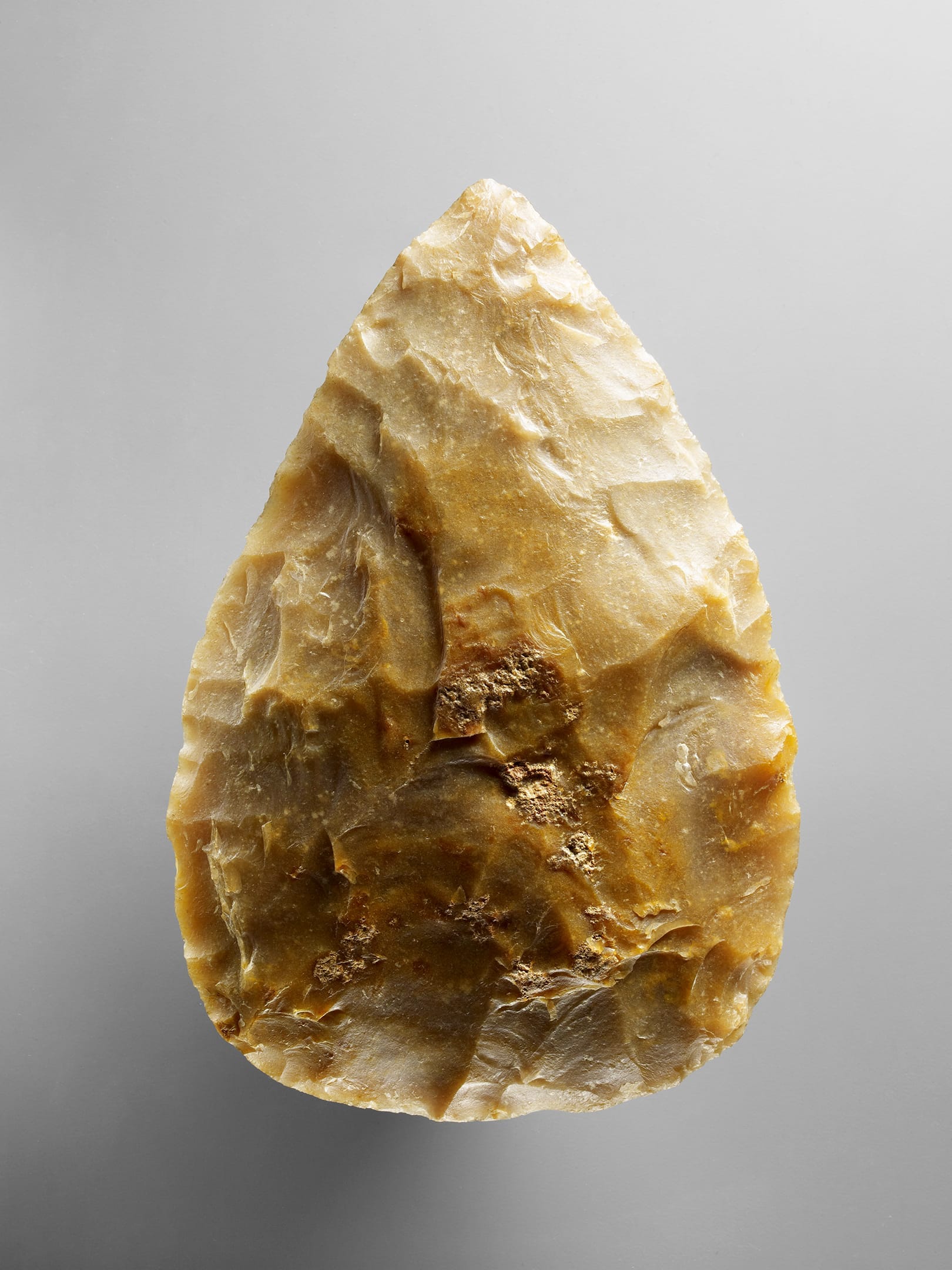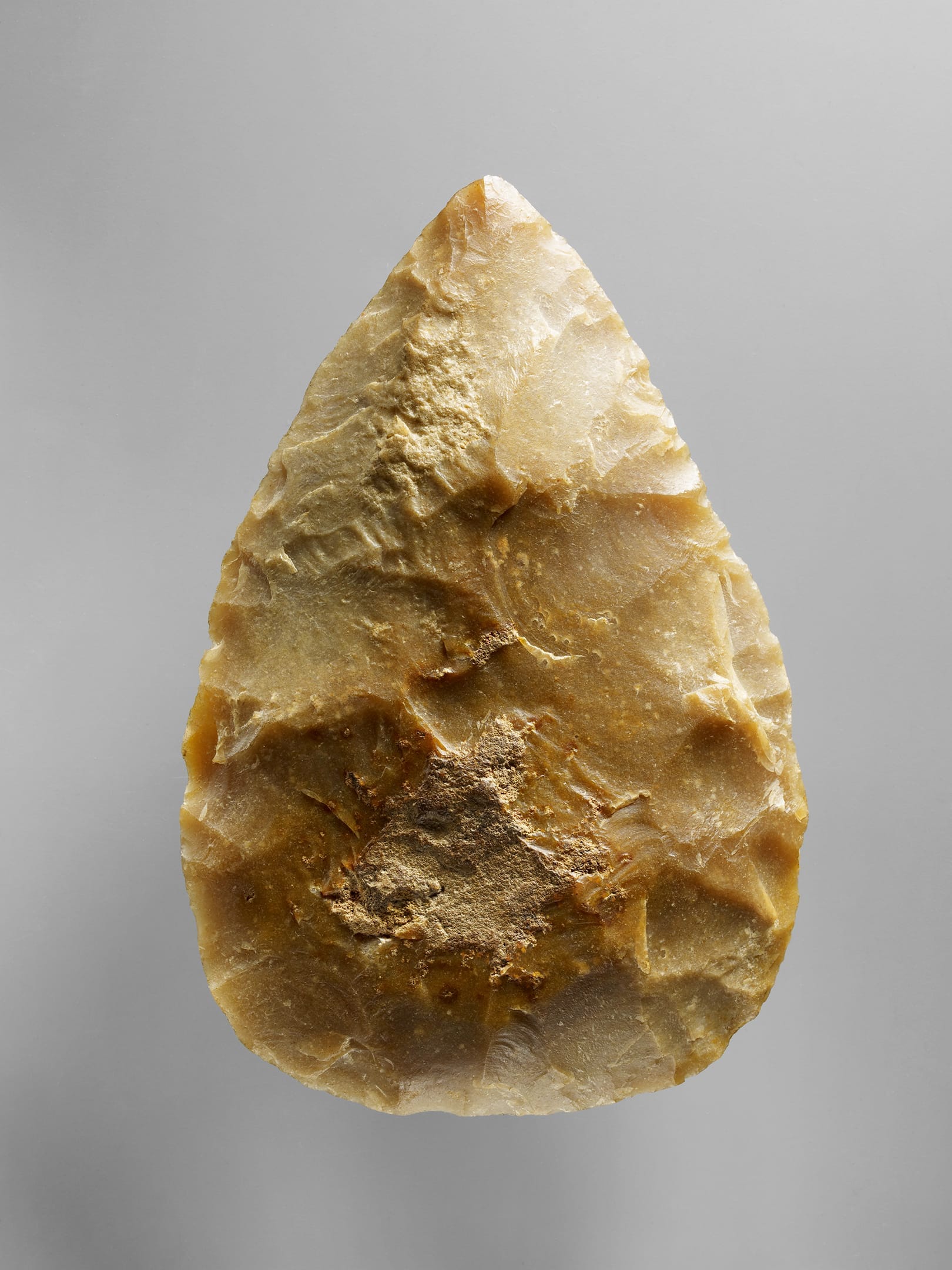The biface is the longest serving tool in human history. ‘Invented’ 1,5 million years ago
during the Lower Palaeolithic by Homo erectus, it remained in continual use by Neanderthal man until 50,000 years ago. It was made by the progressive shaping of a block of flint or other hardstone. Although crude to begin with, as with many of the early stone-hewn tools, the evolution of the biface demonstrates a gradual mastery of proportion and of the symmetry of edge and blade—to the point where we start to
see the development of gratuitous design elements, which reveal the arrival and affirmation of what we can only call Aesthetics. The biface is intact, and of a very respectable size for its type. The light brown flint is typical of Grand-Pressigny, in the French department of Indre-et-Loire; a light age-related patina colours its surface. Its shape is known as cordiform (heart-shaped), according to the typology of bifaces proposed by François Bordes (1919–1981), which allows us to date the piece to
the Lower Palaeolithic, during the Acheulian period, between 500,000 and 300,000 BCE.


